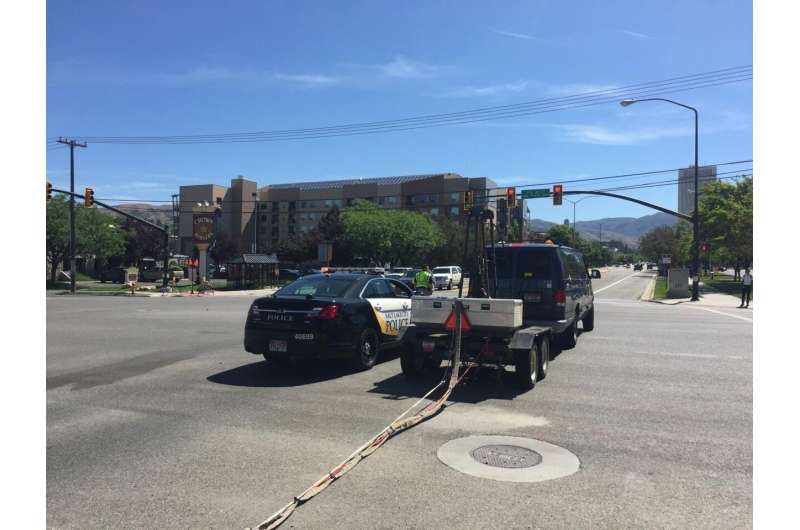Linked faults under Salt Lake City may elevate risk of building damage

A complex zone of folding and faulting that links two faults underneath downtown Salt Lake City could deform the ground during a large earthquake, according to a new study.
The findings, published in the open-access journal The Seismic Record, suggest that earthquakes magnitude 5.0 and larger could cause ground displacement and liquefaction in Salt Lake City that increase the risk of earthquake-related building damage.
As part of the Wasatch Fault Zone, the region has a complex seismic history, with at least 24 large earthquakes occurring in the urbanized parts of the zone over the past 7000 years. Along with previous excavation, borehole and other geophysical studies, the new research also supports the possibility of through-going ruptures across multiple faults in the Wasatch Fault Zone.
Previous excavations in downtown Salt Lake City showed signs of ground deformation, but questions remain about whether "the deformation was related to shaking-induced liquefaction from a more distant earthquake, or was it related to faults that lie beneath downtown," said Lee Liberty, a geoscientist at Boise State University.
The new study by Liberty and colleagues indicates that the deformation may be the result of active faults beneath the city's downtown, and that "ground displacement from underlying faults presents a new hazard that should be addressed," Liberty said.
To learn more about what lies beneath downtown Salt Lake City, the researchers conducted active source experiments along busy urban streets in the area between North Temple and 800 South Streets. During the experiments, a 200-kilogram weight—the seismic source—was dropped at regular intervals to create seismic waves that could be detected by sensors embedded in a fire hose dragged behind the weight.
"We operated during normal business traffic, but we avoided peak traffic times and major commuted roads," said Liberty. "Our seismic source is pretty powerful, with respect to our offsets and target depth. We relied on off-duty police officers to control traffic and to safely operate."
Seismic reflection data collected by the experiments helped Liberty and colleagues identify faulted and folded layers of the ancient Lake Bonneville lakebed that were between 13,000 and 30,000 years old. This folded and faulted zone links the East Bench and Warm Springs faults below the city, the researchers concluded.
Further imaging from seismic wave data provided a better picture of the water saturation and sediment properties below the city, bolstering the case that local liquefaction could occur in a large earthquake. In liquefaction, strong shaking reduces the strength of water saturated and loose soils and turns them into a substance more jelly-like than solid.
Previous trenching uncovered evidence of at least one earthquake event downtown in the past 10,000 years. The researchers hope to follow up their study with more work to better define the earthquake history of individual fault strands in Salt Lake City.
More information: "A broad, distributed active fault zone lies beneath Salt Lake City, Utah," DOI: 10.1785/0320210009
Provided by Seismological Society of America




















